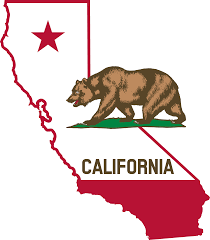The Regulatory Process; the key to successful policy implementation
 The legislative “bill introduction”
deadline has just passed. This year, February 18 marked the
last day for all state legislators to propose new initiatives for
the state. In a term limited environment, legislators
take this opportunity to change policy seriously realizing that
their time to impact policy is narrow.
The legislative “bill introduction”
deadline has just passed. This year, February 18 marked the
last day for all state legislators to propose new initiatives for
the state. In a term limited environment, legislators
take this opportunity to change policy seriously realizing that
their time to impact policy is narrow.
For organizations like California Building Officials (CALBO), our work is cut out for us. The state affords us 30 days to review all legislative proposals, or bills, prior to the state legislature’s ability to act. In theory, this gives us all an opportunity to see what has been proposed, examine its impact upon our constituency, and prepare an appropriate response. This year is no different and CALBO has gone to work.
In the decade preceding the pandemic in an age of in-person meetings, CALBO focused our direct advocacy efforts with state legislators on a message; Do not legislate codes, regulate. This simple message was rife with value to code officials, as it was meant to be an offensive, preventative strategy against poorly-crafted and prescriptive legislation. No offense meant to lawmakers, but the majority of those elected to the state legislature have never administered a building or life-safety code. Nor have the legislative attorneys composing the legislation or the staff members shepherding the bills through the process. When bills prescribe the way we, as code officials, must enact and enforce a new policy – our hands are tied. Oftentimes the methods outlined in legislation directly contradict existing regulations. Those on the front-line of code enforcement, such as CALBO members, find themselves at odds with the very laws they are required and seek to enforce.
We already know the good work that the CBSC completes as part of its functionality as a division of “interagency support.” Coordinating the efforts of applicable state agencies, ensuring its accuracy and compliance with existing statute are all a part of the CBSC and its charge. Code officials live by the regulatory efforts of the CBSC and the triennial and intervening code adoption cycles as they elevate public safety through the adoption of the most contemporary, technologically-advanced and streamlined codes. The proverbial “bible” that code officials follow when conducting their jurisdictional work is to follow the applicable and current editions of the California building, fire, residential, plumbing, mechanical and electrical codes (to name a few).
Returning to CALBO’s legislative efforts, something this year feels different – and that is not a bad thing. This year, many bills direct the California Building Standards Commission (CBSC), alongside other regulatory rulemaking state agencies, to take action in some way, shape or form under the existing code adoption and regulatory process. What?
For example, recently introduced AB 2597 (D-Bloom) would require HCD, for CBSC approval, to develop and adopt mandatory building standards for cooling in residential dwellings. Similar to lack of heating, dwelling units without cooling would be deemed substandard. Also introduced, AB 2811 (D-Bennett) would require the CBSC to develop standards that would require newly constructed nonresidential buildings with dual plumbing to allow use of recycled water. Still up for consideration, AB 965 (D- Levine) would require HCD to research and develop building standards regarding the installation of future electric vehicle charging infrastructure for existing nonresidential development parking spaces. Also under consideration, AB 1329 (D-Nazarian) would require HCD and the CBSC to develop a functional recovery standard for earthquake loads. These measures have been proposed within this two-year session and will likely be refined a bit through the legislative process. Although this is by no means an endorsement of the proposed policies, it feels refreshing to witness a demonstrated understanding on the part of the legislature that policy is best implemented through inclusive regulatory channels.
California lawmakers are progressive. They have some good ideas, and our state prides itself on being the leaders in thoughtful, socially-developed public policy. As Californians, we live by the credo that what happens in the golden state will spread throughout the nation like wildfire. With that, we still need to be mindful that a great idea is simply a notion unless it is appropriately implemented and becomes enforceable. CALBO is a partner to progressive legislators. More often than not when we take an Oppose position on a measure, it is due to the fact that it is not enforceable or lacks the means to implement. By directing an agency to take action on a policy, it takes the opinion out of the policy and enables the enforcement community to implement. A win-win for legislators and regulators alike.
Today, we all strive for streamlined processes and procedures. Efficiency has become a good word that is not limited to bottom-line driven businesses and the private sector. The public sector encourages holistic models that will look at all elements of a project, including legislative intent. When lawmakers come to the realization that CALBO and our code official members are partners in enforcement, not foes in policy, we have reached a new collaborative benchmark that benefits us all. 2022 is looking up, and we’ll take it.
